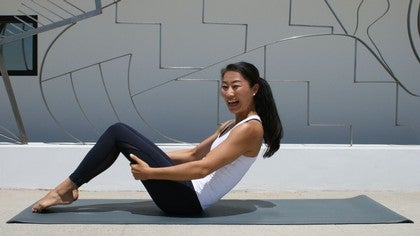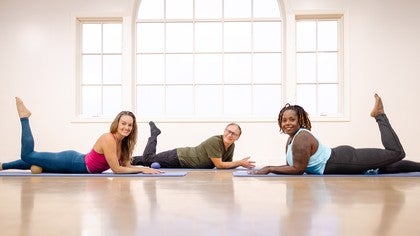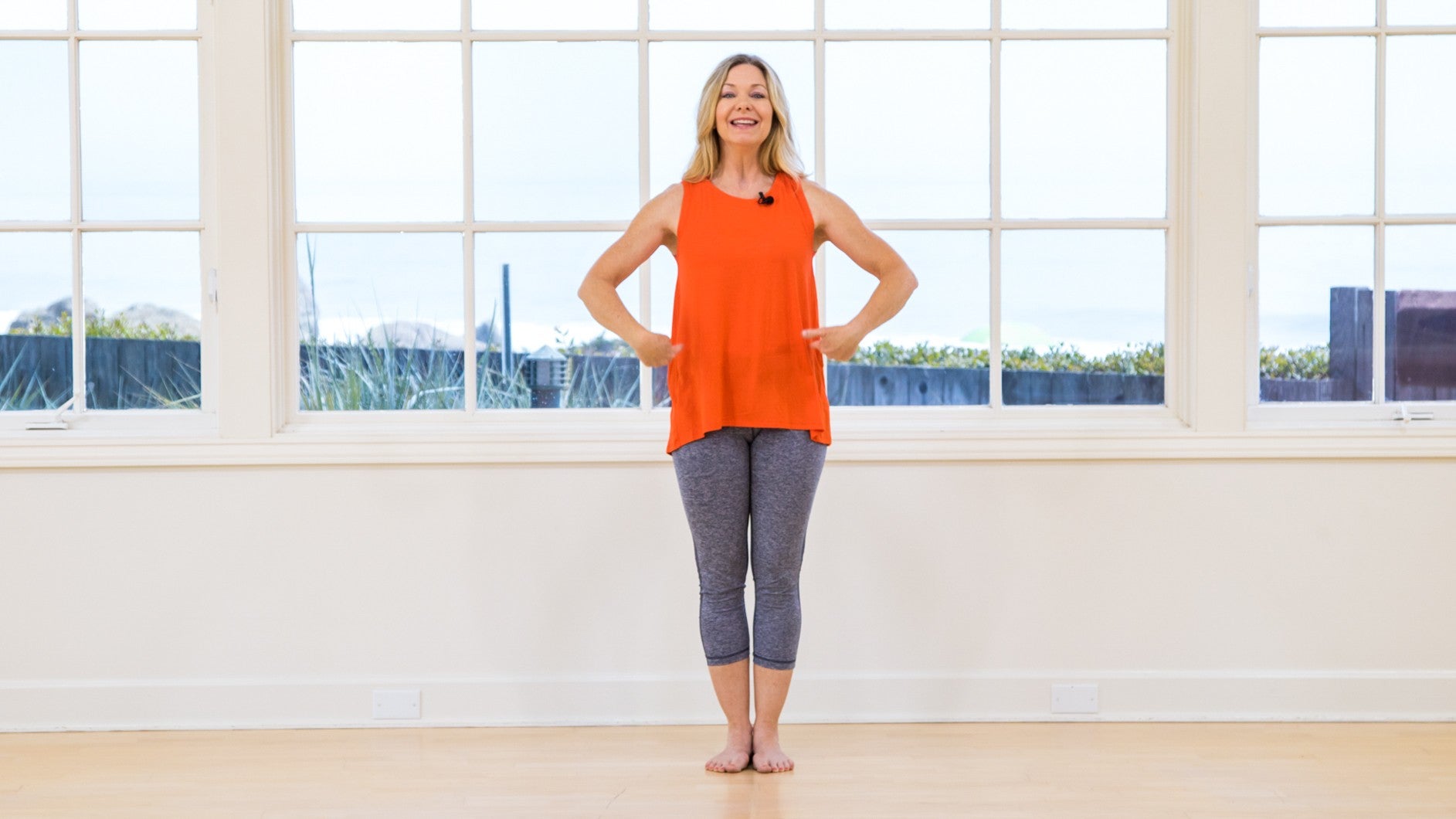
Pilates Lingo
Do You Speak Pilates?
When you begin a Pilates practice, you may feel the instructor is speaking a foreign language. In a way, you’re not wrong. Pilates aficionados share a common vocabulary, developed over time, that functions as a shorthand for sophisticated concepts and ideas. A Pilates student anywhere in the world is apt to hear the cue “navel to spine” in their native language and know to pull the abdominal muscles in and up. What’s helpful to the initiated can be off-putting to the newcomer. To help you feel more fluent in Pilates vocabulary, we’ve rounded up some of the most common examples.
Over the years, the Pilates world has developed its own language. Teachers use keywords or phrases, straightforward commands, and more evocative imagery to help clients understand the exercises and the actions of the body. These terms have been passed down from teacher to teacher and now form a sort of universal Pilates language. In this post, we focus on shorthand expressions and descriptive imagery, rather than anatomical terms (though you’ll hear plenty of those as well). These terms will help you better understand your Pilates instructor, wherever in the world you practice Pilates!
Pilates Terms
Powerhouse
This term describes the muscles of the abdominals, back, and hips that are so important for developing power, strength, coordination, balance, centering, and control. Learn more about the Pilates Powerhouse on YouTube with Erin Wilson.
Centering
Also mentioned above, it's a concept that refers to a sense of balance between both sides of the body, as well as front to back. In Single-Leg Circles, for example, thinking about centering helps keep both shoulders and the opposite hip anchored to the Mat.
The Box of the Body
This refers to the torso. In this case, the bony landmarks of the hips and shoulders. Keeping these level, as opposed to having one hip or shoulder sitting higher than its counterpart, leads to better alignment. The box also guides our range of motion, keeping us within a safe range and preventing over-stretching the joints.
Neutral Pelvis
Neither arched nor rounded, neutral pelvis refers to the state in which both hipbones and the pubic bone are in the same plane when lying down or sitting. The simple action of finding the neutral pelvis is often enough to switch on the Powerhouse.
Action Phrases
“Navel to Spine”
The action of tugging the belly button downwards (when lying on your back) or pulling it in (while standing or sitting) contracts the abdominals. Bringing the abdominals closer to the spine creates optimal support for the trunk when lifting or twisting.
“Tighten Your Corset”
This term refers to the girdle-like function of strong abdominal and back muscles. The muscles of the powerhouse region protect and support the spine.
“In and Up”
Another term for the bracing action of the powerhouse.
“Ribs in”
For optimal alignment, the ribcage should not extend in front of (or behind) the hipbones but rather be in line with hipbones. You may also hear, “Knit the ribs together.”
“Lift through the crown of your head”
A reminder to elongate or lengthen the entire body from the feet (when standing) or the tailbone (when seated) up and out the top of the head. You may also hear, “Tall spine.”
“Collarbones wide”
This cue encourages us to create the maximum amount of space from shoulder to shoulder. It’s the opposite of a rounded computer posture. Think of moving the distal (outer) ends of the collarbones away from one another.
“Zip up your abdominals”
This is shorthand for the action that’s needed to close a pair of tight jeans. Everyone can relate to this cue! Even imagining it probably just made you pull your abdominals in and up.
Descriptive Phrases/Imagery
Like similes and metaphors in poetry, these phrases use images from nature and daily life to help us understand the desired movements and actions.
“Bone by bone” or “String of pearls/beads”
These are phrases that encourage segmental mobility of the spine in exercises like the Roll Up or the Roll Back. Thinking of each vertebra as an individual unit helps us envision each section of the spine moving sequentially: upper back, upper mid-back, middle back, lower-mid back, and lower back.
“Pelvic Clock/Bowl of the pelvis”
These images are an easier-to-understand alternative to anatomical terms that describe the movement of the pelvis. Imagining the pelvis as a clock face, moving from three o’clock to nine o’clock means tilting the pelvis to the left or the right. Imagining the pelvis as a bowl of water and then spilling the water out the front of the bowl brings the back into an arched position (anterior pelvic tilt), and vice-versa.
Pilates instructors have many other forms of communication in their teacher’s toolbox. A teacher can vary the tempo or volume of verbal cues to encourage a particular quality of movement. They can use tactile or hands-on cueing to recruit particular muscles or guide a student through an exercise. They can match their breath to the students', slowing down or speeding up the pace of the workout. Finally, eye contact and facial expression, whether the interaction takes place in-person or through a screen, can convey intention and encouragement. A skilled Pilates instructor will use all of these tools to ensure the best experience for his or her client.
Comments
No comments yet. Be the first!














You need to be a subscriber to post a comment.
Please Log In or Create an Account to start your free trial.